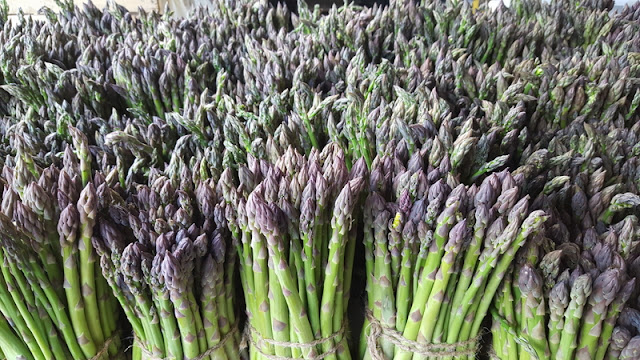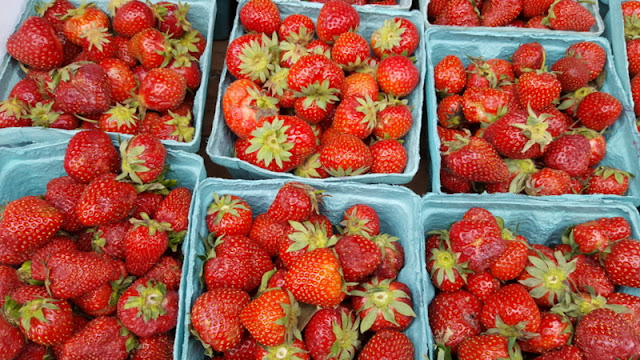My indifference has basically continued to this day. When I see the fronds from afar, I think "Dill!" and get disappointed when I see my mistake. This is not to say I never eat fennel. Once in a while, especially when I see a nice bunch in the Union Square Greenmarket, I'll buy some and eat it raw, thinly sliced with a generous sprinkle of salt.
But this member of the carrot family fennel does have many enthusiasts -- like my friend Hiroko. I'll let her take it over from here.
I like to use the whole fennel, including the fronds - they have a nice green color - in salads, but sometimes markets in the US sell them with the fronds removed. I guess they are too bulky and take too much space on the store shelf. So it was a nice surprise when I found a fennel with whole fronds attached in a Tokyo supermarket.
It was so gloriously tall and bushy - look how it was compared to
a 5ft tall kid!
I like fennel with orange (quite refreshing) - it tastes like celery with a bit of anise flavor, so it goes well with the sweetness of orange.
Or with thinly sliced zucchini and a mustard vinaigrette.
When we're in Switzerland [Hiroko's husband is Swiss], we often eat fennel with roast meat. [Editor's note: Avert your eyes! This is a vegetarian blog.]
On my recent trip to Munich, I obviously enjoyed the city too much, with copious amount of sausage and beer, so I was eating roasted fennel for breakfast and drank fennel tea. They help digestion.
It really worked (so I went out to eat more) !

Now who couldn't appreciate that?















































